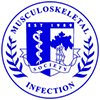Author(s): Camelia E. Marculescu, MD, MSCR, Joseph R. Cantey, MD; Division of Infectious Diseases, Medical University of South, Carolina, Charleston, SC
Title: Polymicrobial Prosthetic Joint Infections (Poly PJIs)- Risk Factors and Outcome
Purpose: To determine the outcome and factors associated with poly PJIs.
Methods: All episodes of THA and TKA PJIs treated at our institution between 1/98-11/2006 were reviewed. The survival free of treatment failure (TF) was assessed by the Kaplan-Meier method. Multivariable logistic regression was used to identify factors associated with poly PJIs. Thirty four of 174 PJI episodes (19%) were polymicrobial. 62% of these (21/34) involved a THA. P. aeruginosa, other GNB, enterococci were present in 26%, 35% and 32% of poly PJI episodes. MRSA (26.4% vs 7.1%, p = 0.001) and anaerobes (11.7% vs 2.8%, p=0.04) were more common in poly than in monomicrobial (mono) PJIs.
Results: Compared to the mono PJIs, poly PJIs occurred in patients h65 years (67% vs 49%, p = 0.05),presented with a soft tissue defect/dehiscence (23.5% vs 2.8%, p = 0.0002), drainage (79.4% vs 39.2%, p < 0.0001), had prior local irradiation (8.8% vs 0.71%, p = 0.02), and less bacteremia (0 vs 14.2%, p = 0.01). Poly and mono PJIs did not significantly differ in gender, type of co-morbidities, immunosuppressive therapy, median duration of intravenous antimicrobial therapy, prior joint revisions, type of surgery (two-stage-TSE, one-stage revision, debridement/retention-DR). The 2-year cumulative probability of success of poly PJIs was 63.8% (95% CI: 43.8%-80.5%) and of mono PJIs was 72.8% (95% CI: 63-80.9%) (p = 0.24). 26%, 38%, and 29% of poly PJI episodes were treated with TSE, DR, resection arthroplasty, and the 2 year survival free of TF in each group was 77.7%% (95% CI: 42.8%-94.2%), 52.7% (95% CI: 28.4%-75.9%) and 64.2% (95% CI: 28.7%-88.9%). In multivariable analysis, presence of a soft tissue defect /dehiscence (OR: 5.9, 95%CI: 1.5- 23.3), drainage (OR: 5.0, 95% CI: 1.9-12.9), and ageh65 years (OR: 2.8, 95%CI: 1.1-6.8) were factors significantly associated with poly PJIs.
Discussion: Polymicrobial PJI is relatively frequent at our institution. Factors associated with poly PJIs include presence of drainage, soft tissue defect/dehiscence and age h65 years. MRSA and anaerobes were present more in polymicrobial cultures. The outcome of poly PJIs is in general favorable, especially when treated with TSE.

